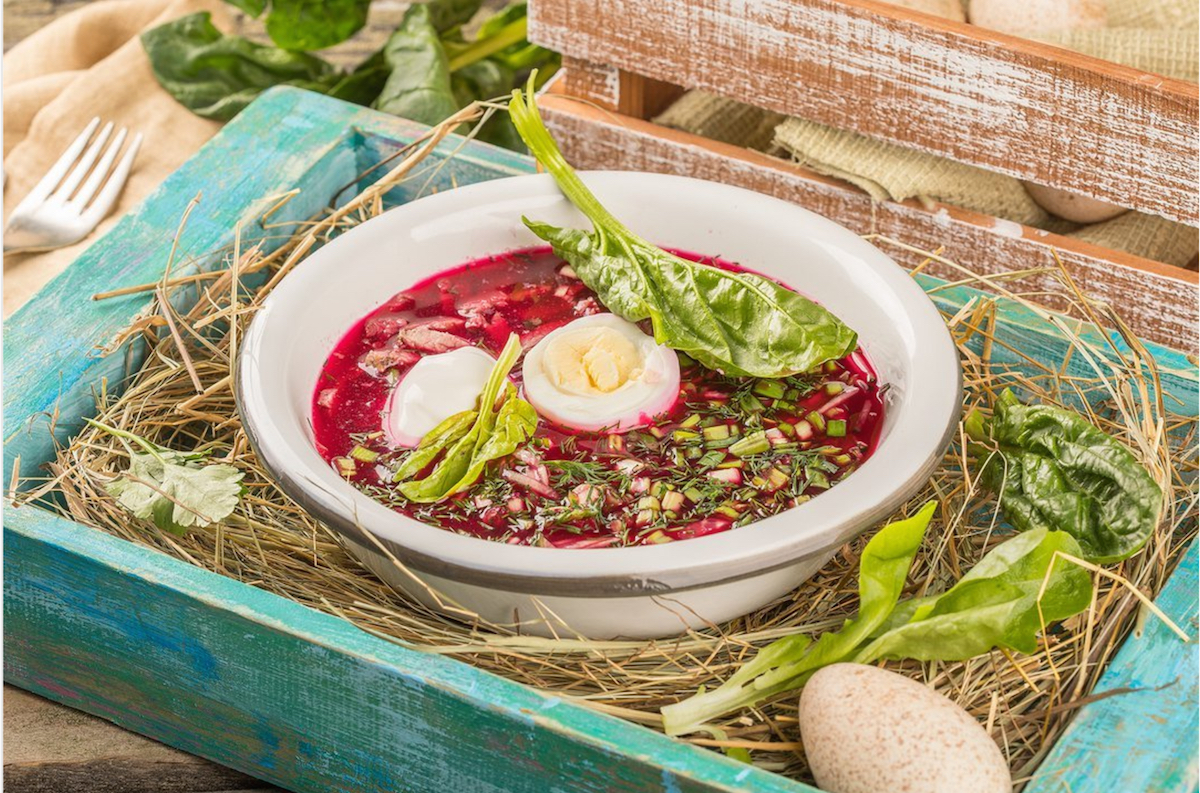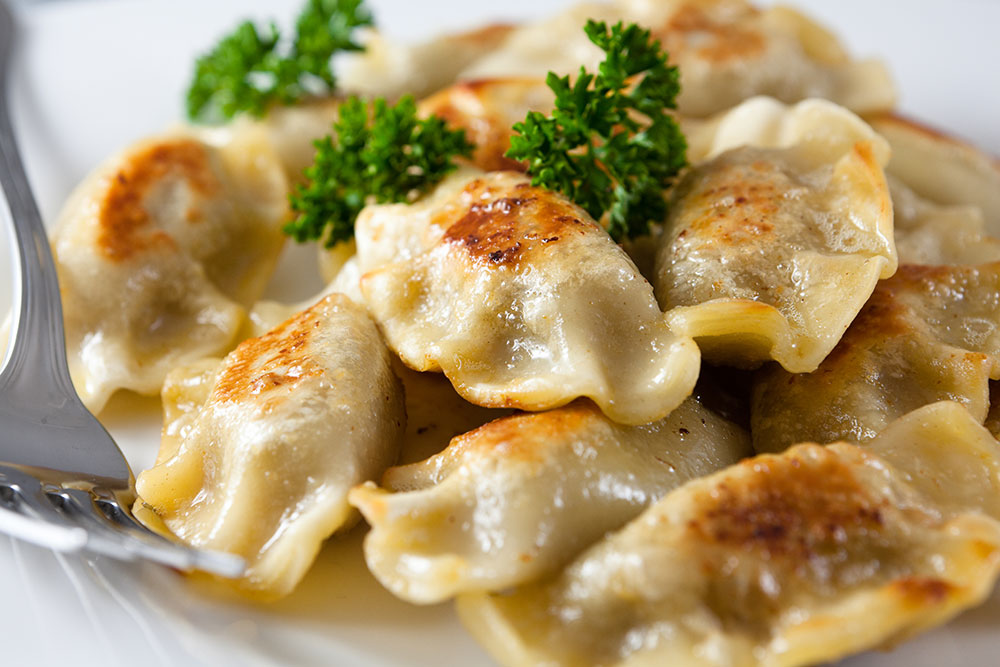Pimp your picnic: New East alternatives to brighten up your al fresco dining

Tired of cucumber sandwiches and cream tea? Rejuvenate your picnicking this year with The Calvert Journal’s guide to the best summer snacks from the New East, from fermented superfoods to Balkan kebabs and Tatar sweets
Considering the rate at which dishes from the New East are becoming the new superfoods (see the inspiring stories of kefir and buckwheat), the region’s cuisines should already be on any self-respecting foodie’s radar. And in the summer, in the true spirit of the season, it only makes sense to take the whole lot outside and make your dining experience al fresco.
Follow our guide for the best New East alternatives to cucumber sandwiches and scones. Some of these are for fit for a barbecue, and others are ready to be taken to a park straight from your local eastern European store.
We’ve included some examples from Instagram to illustrate how these stylish treats can help you take over social media as well as the local park.
Kefir
A refreshing yogurt-like drink that is making headlines and shaking up the superfood industry but has been a staple in the New East diet for centuries – and famed as a great way to aid digestion. The fermented milk drink originates from the North Caucasus and is very low in lactose but rich in vitamins, minerals and probiotic bacteria. Because of the fermentation process, kefir has small bubbles and tastes slightly carbonated, meaning it’s good to drink on its own. Or, if you’re looking to impress your foodie mates, serve it with a bit of dill and salt (and maybe some grated cucumber for the ultimate tzatziki- and raita-inspired snack), or a sprinkle of sugar and berries for a healthy dessert.
Kvass
Kvass is one of the most controversial food items from the New East: this beer-like fermented bread drink could be crowned the region’s Marmite. Traditionally made with rye bread, sugar and yeast (and sometimes fruit) the drink is non-alcoholic – although low alcohol varieties also exist – and is praised as a refreshing summer drink and a good alternative to sweet sodas. Most of the commercially produced kvass, however, is made in a similar way to sodas and is, in reality, simply a kvass-flavoured carbonated drink. For the real experience make sure the kvass was made with real bread. Authentic kvass is also said to be full of vitamins, so get ahead those still drinking kombucha – so last season.
Okroshka or svekolnik
Both orkoshka and svekolnik are soups, which are not an easy picnic feat to pull off, but would make a great veggie side for your barbecue. Both are cold soups with salads as a base, which are mixed with kefir (for svekolnik) or kvass (for okroshka) right at the table. Polish svekolnik with pickle juice and kefir is especially refreshing: just grate some boiled beetroot, cucumber and pickles and slice a boiled egg. For okroshka, you’ll have to chop up a more substantial mayonnaise-free version of a Russian salad before adding the liquid. Also worth mentioning is the fact that svekolnik is a beautiful deep magneta colour that will bring you all the likes on Instagram. Serve with rye bread and drop a few ice cubes in if it’s especially hot outside.
Sunflower seeds
Exchange your crisps for a hippy alternative: sunflower seeds. Usually sold fried and salted but still in their shells, these get a bad rep because they are associated with gopniks. But they are also widely accepted as a delicious snack that is relatively good for you. Most people pair them with beer or kvass, and shell them with their teeth before spitting the shell out. And if you get fed up, feed some to pigeons, they’ll always be grateful.
Sirki
These chocolate-coated cheesecake-like cottage cheese bars send flocks of eastern European expats to speciality stores in other countries. It’s been scientifically proven that it’s impossible to stop eating them if you have more than one in your fridge, and if chilled (or even frozen for a more ice cream-like texture) they make an excellent. Try the Lithuanian variety with lemon glazing instead of chocolate.
Braid or smoked sausage cheese
The Armenian cheese called chechil is widely known as “braid cheese” because of its shape: strings of smoked cheese braided like hair. Texture-wise it resembles both string cheese and the white brine Georgian suluguni cheese. The braid can be cut up to be eaten, but it’s more fun to try and take it apart string by string. Delightfully salty, chewy and smoky, the cheese makes a perfect partner for beer and wine. Smoked sausage cheese is something else: it is simply processed cheese formed into a large sausage shape. It became widespread as a cheap cheese alternative in the Soviet Union, and dairy snobs still look down on it, but if you can overcome cheese classism you will be rewarded by its creamy texture – especially good with crackers.
Sirene or brinza cheese
Feta is great but try replacing it with Bulgairan sirene cheese or the briny white brinza variety in order to woo any cheese experts that might be present at your picnic or barbecue. Both would complement any cheese plate, and work great in pies and salads. Sirene is also arguably the most important ingredient of the Bulgarian shopska salad which includes fresh vegetables and cheese.
Lavash or tandir bread
Step away from the baguettes: the best picnic bread is officially lavash, thin Armenian flatbread made in several Caucasian and Central Asian countries. Fluffier varieties similar to the Indian naan are called matnakash or just tandir (after the clay oven similar to tandoor in which they are cooked), and are just as good for dipping, grilling and making wraps and sandwiches. In 2014 Armenian lavash was added to the UNESCO Intangible Cultural Heritage list. How many bread products can boast of that?
Aubergine and courgette caviar
They might not look very appealing and have confusing names (they have nothing to do with real fish caviar), but if you give these veggies dips a chance you will never go back. Made from tomatoes, onions, garlic and aubergines or courgettes, grilled or fried, these dips are either blended to the creamiest of textures or left chunky. Pile on bruschetta, try with crusty rye bread with a generous layer of salted butter or as a dip for flatbread or crisps. The name “caviar” comes from the ancient Russian definition of the word as any finely-chopped dish, so vegetarians need not beware.
Potato pancakes
These potato pancakes from Ukraine, Poland, Belarus and Russia are similar to Swiss rosti and Jewish latkes. Although called different things in different countries (draniki in Russia and Belarus, deruni in Ukraine, placki ziemniaczane in Poland), the main principle remains the same: crispy pancakes of grated potato and onions, usually eaten with sour cream or mushroom sauce. Fry these up in advance – they can be reheated on a grill or enjoyed cold.
Chak-chak
Chak-chak, also spelled Çäkçäk, is a popular Tatar sweet. Unleavened dough is separated into small balls or noodle-like shapes and deep-fried before being stacked in special moulds with nuts and soaked with hot honey or syrup. When it dries it is removed from the mould and cut like cake. Exceptionally sweet, crispy and sticky, the cake, which is the national dish in Tatar, Uzbek, Kyrgyz, Bashkir and Kazakh cuisines, will take your dessert game to next level.
Ćevapi
If you plan on barbecuing New East-style, go for these Balkan specialties: skinless sausages similar to kofte kebab, usually made from beef, lamb, pork or a blend of several meats. To keep it authentic, serve it in a flatbread with some chopped onions, sour cream or kajmak, a Balkan clotted cream-like product, cheese (like feta or bryndza) and ajvar, a red pepper spread similar to aubergine caviar.
